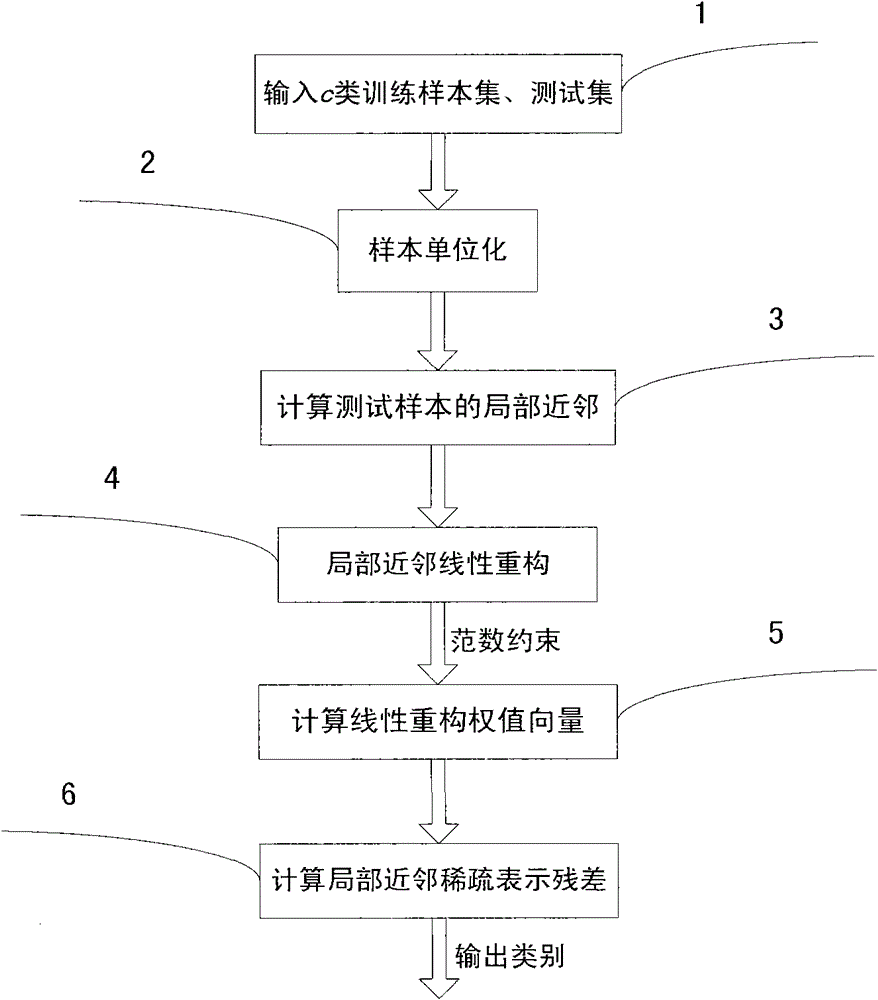Method for identifying target based on local neighbor sparse representation
A sparse representation, target recognition technology, applied in character and pattern recognition, computer parts, instruments, etc., can solve the problem of lack of discrimination and high time complexity, and achieve strong versatility, low time complexity, and high computational complexity. Simple process effect
- Summary
- Abstract
- Description
- Claims
- Application Information
AI Technical Summary
Problems solved by technology
Method used
Image
Examples
Embodiment Construction
[0026] In order to make the object, technical solution and advantages of the present invention clearer, the present invention will be described in further detail below in conjunction with specific embodiments and with reference to the accompanying drawings.
[0027] We apply this method to the recognition of MNIST handwritten digits and Extend Yale B frontal faces. The target recognition system based on local neighbor sparse representation developed by the present invention is a target recognition system oriented to the field of pattern recognition, which is implemented in C++ language by using object-oriented design methods and software engineering specifications under the environment of microcomputer Windows XP.
[0028] refer to Figure 7 It is a schematic structural diagram of a target recognition system based on local neighbor sparse representation of the present invention, the input sample module 1 receives and outputs the c-type training sample set and the test sample s...
PUM
 Login to View More
Login to View More Abstract
Description
Claims
Application Information
 Login to View More
Login to View More - R&D
- Intellectual Property
- Life Sciences
- Materials
- Tech Scout
- Unparalleled Data Quality
- Higher Quality Content
- 60% Fewer Hallucinations
Browse by: Latest US Patents, China's latest patents, Technical Efficacy Thesaurus, Application Domain, Technology Topic, Popular Technical Reports.
© 2025 PatSnap. All rights reserved.Legal|Privacy policy|Modern Slavery Act Transparency Statement|Sitemap|About US| Contact US: help@patsnap.com



